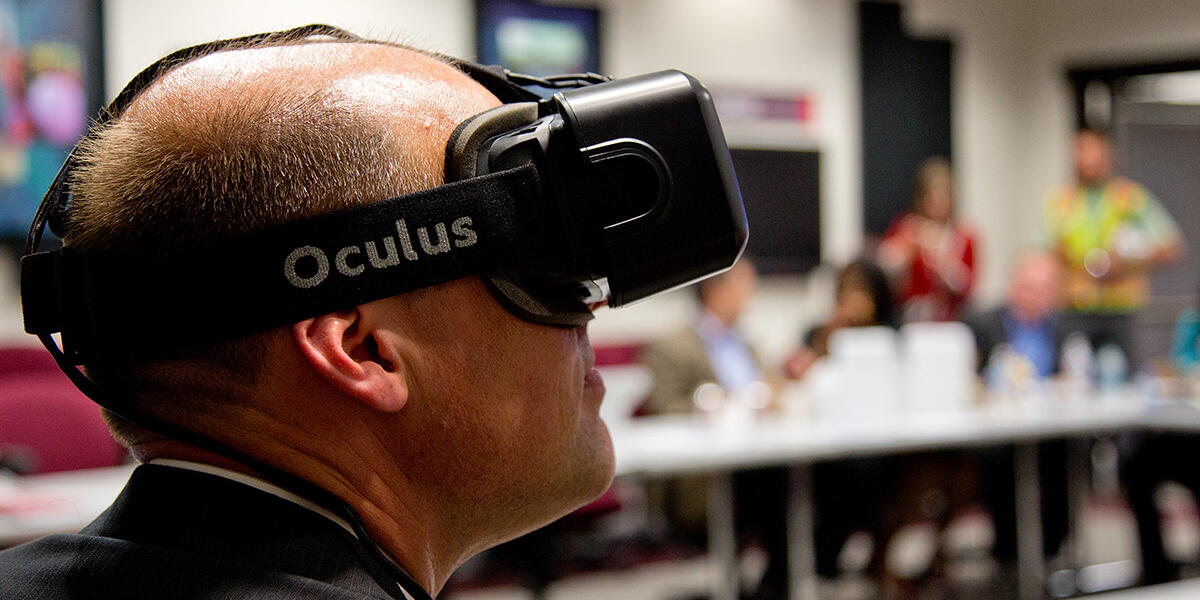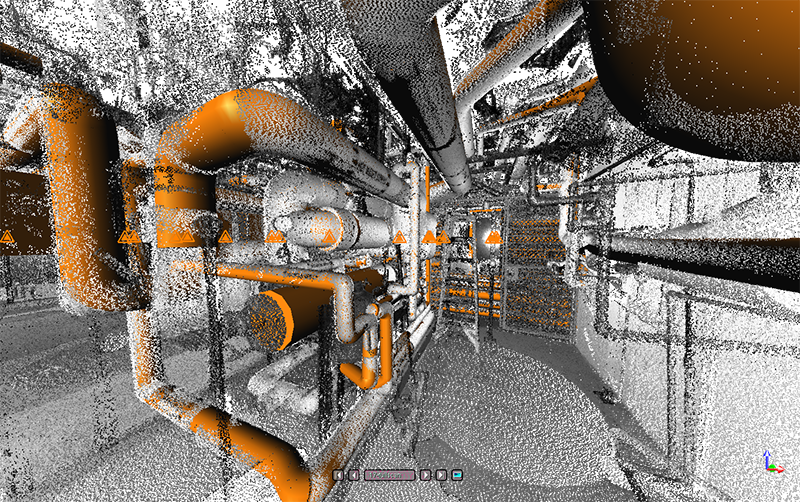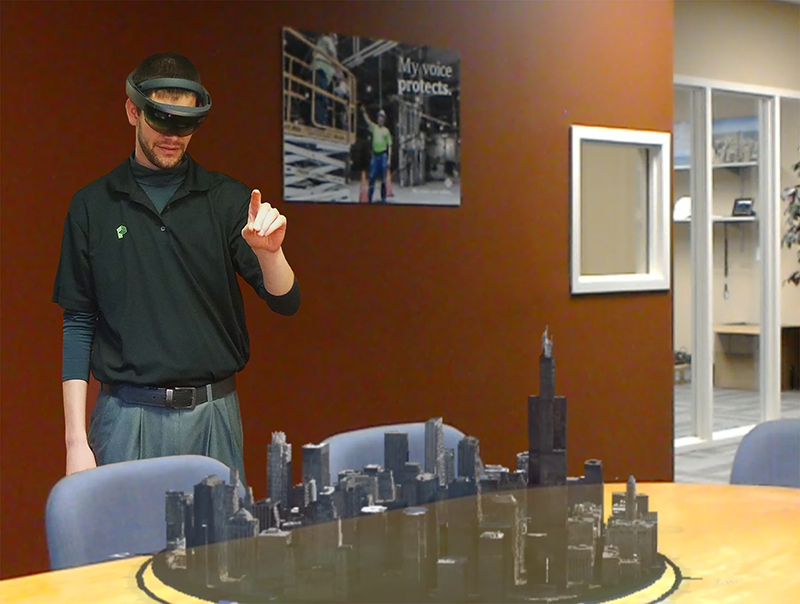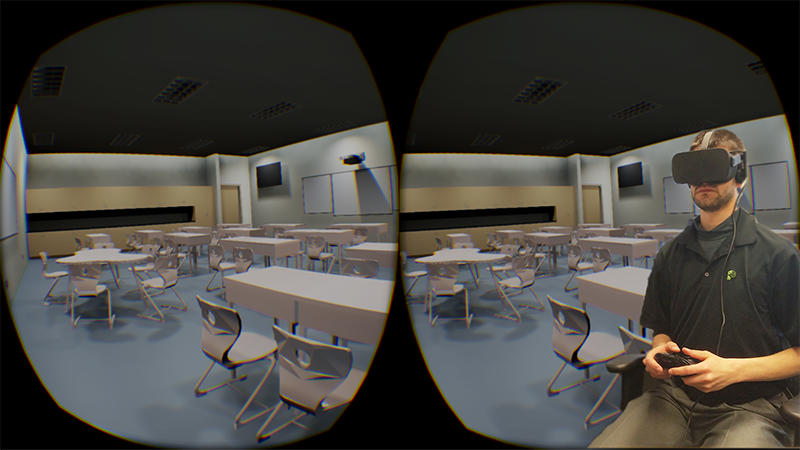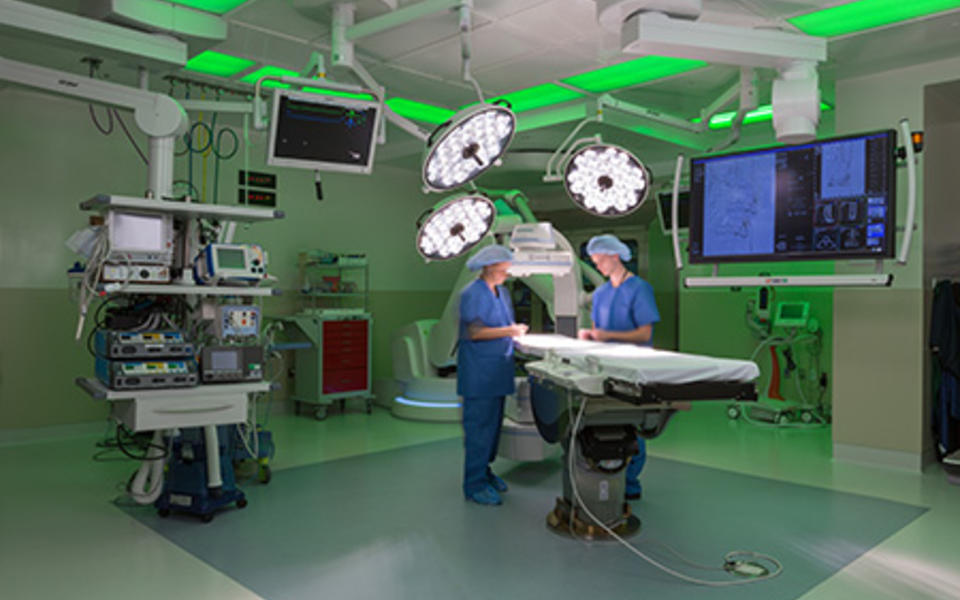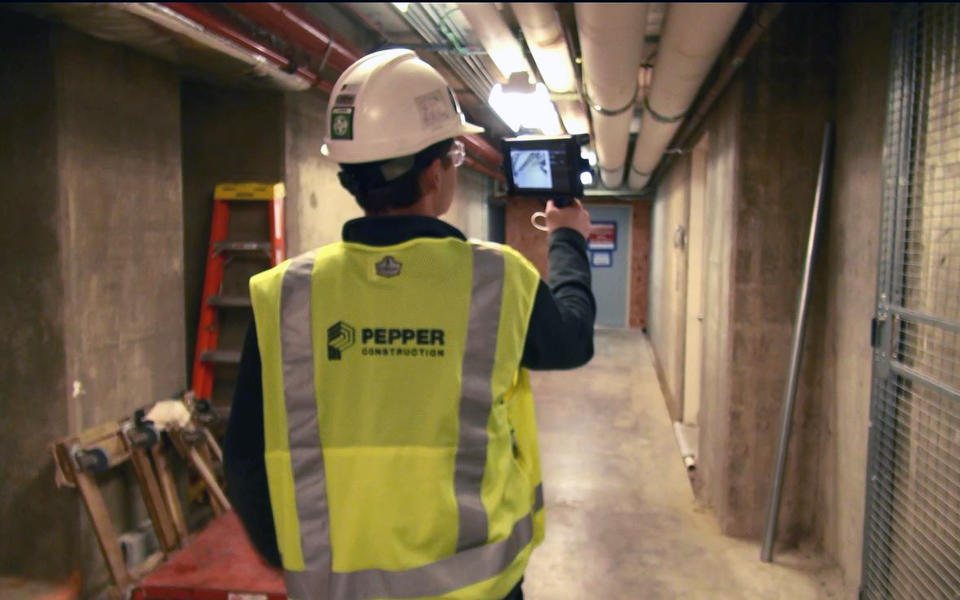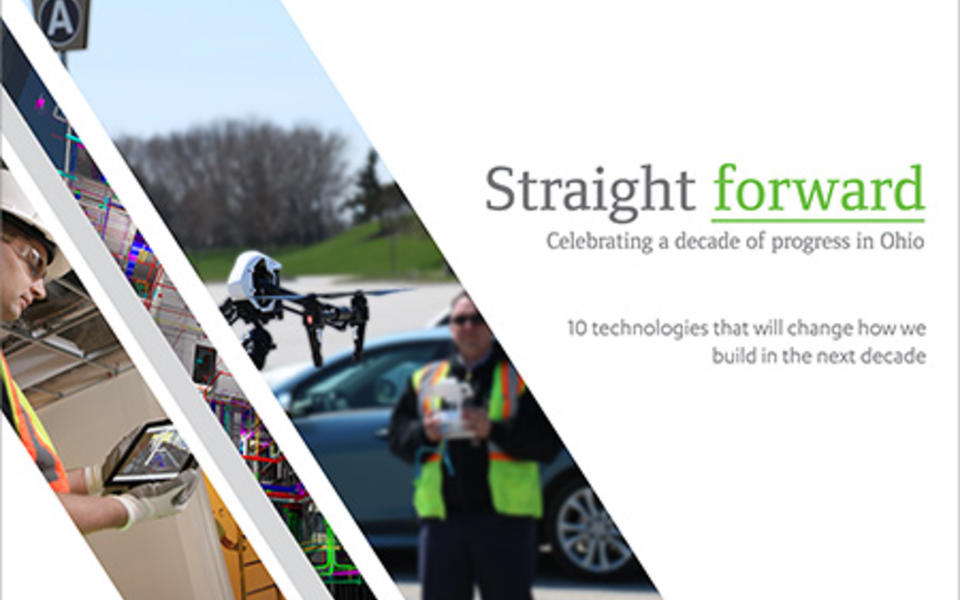Virtual construction & technology
Virtual reality (VR) has been a trending topic the past couple of years, and particularly last year. With high-profile companies like Google, Facebook and Microsoft each investing in the technology, 2016 was the year of the hardware. It’s predicted that 2017 will be the year of the software, and with both more readily available to consumers, VR will start to become mainstream. As the world waits to see what will happen in the consumer market, others are making their predictions about which businesses will be impacted by VR the most.
In the AEC industry, we’ve been working in a virtual environment for several years now, using the technology to make early, informed decisions on projects. It’s common to build a 3D model to help facilitate planning and coordination, as well as facility management. Before BIM, the construction industry had a reputation for trailing in technology, and some would argue we’re still behind.
Despite this perception, our use of 3D has positioned us to be one of the first industries to adopt VR. Today, we’re helping the technology companies explore what’s next as they evolve. So while consumers wait on the software to catch up with the available hardware, construction companies have had the content for a while.
With everyone focused on the “wow factor” of VR and augmented reality (AR) or mixed reality (MR), it’s natural to isolate or showcase those services and talk about what’s next. However, to help teams work through critical points on a project, it’s important to consider the entire toolbox of technology.
At Pepper, we’re calling the spectrum of media (VR, AR and MR) Immersive Reality and classifying them by level of immersion. Why? It keeps the focus on what we want the technology to do and not on the technology itself. Different projects will require a different virtual experience to achieve the desired goals. Once we understand what type of experience or level of immersion we want, then we can choose the right medium to achieve those results.
For example, a hospital OR renovation may benefit from a fully-immersive model so doctors can simulate the space, but a lobby renovation may need a different level immersive experience. The different spaces have different goals that require different solutions.
Levels of immersion
Level 1: Non-Immersive
Non-immersive virtual environments, which include 3D BIM models, allow the client to visualize the project without using special equipment. These models can be viewed on any type of screen, from a phone to a TV, which is a convenient and cost-effective approach for most projects.
Mobile versions tend to be lower in quality to fit the screen size and allow for faster connectivity. They are ideal solutions for identifying project challenges and coordinating work on a jobsite. They can be detailed enough to produce estimates or tie activities to the schedule, and they are generally easy to produce to help facilitate decisions quickly.
Non-immersive models can also be very realistic. The more realistic, the more time they take to create. An interactive walkthrough with a realistic rendering requires a higher processing computer, like a gaming laptop, and a good understanding of the ins and outs of the software that produces the designs. As such, this level of detail is more expensive to produce. The detailed view helps designers and end users visualize the materials, layout and scale, and it allows for adjustments in lighting, perspective and range of motion.
Level 2: Semi–immersive
Semi–immersion includes augmented and mixed reality and is the balance between real and virtual worlds. This is the newest platform to be explored, where virtual elements are placed over the real environment. This type of solution allows teams to compare what is actually happening with what is to come, essentially providing a preview of the final product.
A good example is an app that allows a homeowner to take a photo of their home and see what the paint color or flooring will look like with their furnishings in place before they invest in a new finish.
Semi-immersive technology is still being developed and tested, but a few have already hit the market. The current product with which most people are becoming familiar is the Microsoft HoloLens. Though the initial equipment investment is higher than non-immersive platforms, the HoloLens does not require a separate computer and provides a better overall user experience.
Other devices like the Meta Vision and the Meta 2 are still in development, and when released, they will offer more computing power, higher resolution and allow for a wider field of view. Though these glasses are significantly more powerful and less expensive than the Hololens, they require a separate computer to run the applications, which can detract from the user experience.
Semi-immersive technology also includes wearables. The Daqri Smart Helmet promises to revolutionize jobsite safety and improve project team communication, and it runs on its own computing power. From safety to project management, it allows anyone to pull up the BIM, maintenance and other site information based on where they are standing on site. While the technology that powers the Daqri Smart Helment exists now, there are other logistical and regulatory obstacles that have to be overcome before they become mainstream on jobsites around the world.
Finally, phones and tablets have been used for AR and MR for quite some time. Big box retailers and car companies are utilizing this technology to help with marketing their products. For the AEC industry, people are using mobile devises to overlay logistics plans or access a topographical view of the drawings and compare them to existing conditions.
Probably the widely adopted application right now is for marketing, which is easier to produce because the information used in marketing demonstrations is more basic, uses assumptions or has the benefit of using hind-sight to run a simulation. These marketing demonstrates are great for showing the technology’s potential and for high level visualization when little information is available, but they are limited in their ability to be used on projects for planning and construction. Several companies can help produce quick phone or tablet augmented reality pieces, like Augment Dev, Vuforia, ARToolKit and 4D Studio.
The initial cost of some of these products is relatively affordable, but the real cost of these solutions comes in the form of time and expertise needed to develop a virtual environment that augments the real environment in a way that adds value to the project. The software is not intuitive.
While our industry is still exploring how semi-immersion will work for our projects, we’re learning that the best applications are driven by the project teams, and it’s changing the way we collaborate. Applications in the AEC industry include technology for trainings, inspecting virtual mockups of the entire building before it’s built, coordinating details, planning construction sequences and logistics and finalizing design decisions more accurately and efficiently early-on.
Level 3: Fully-immersive
Full immersion is a true interactive virtual reality experience within an enclosed headset. The most recognized products include the HTC Vive, Oculus Rift, Playstation VR and OSVR. The end-users have no connection to reality itself, but are transported to a virtual world through a pair of glasses. They experience the environment first hand without a projector, computer monitor or a TV screen.
Fully-immersive experiences vary. Applications include 360-degree panoramic photos and videos (similar to Google street view), interactive training sessions, simulations and virtual mockups.
The quality of these experiences varies widely as well, from basic grayscale shapes to realistic renderings with correct lighting and even the ability to specify the angle of the sun. The more realistic, the more involved the production. The range in quality equates to a broad price range, which allows VR to be used on practically any project.
The more realistic and greater detail, the more challenges come with creating that experience, particularly for construction. If the contractor doesn’t have equipment mobile enough for a temporary jobsite or office setup, the team has to travel offsite or to a third party presentation room.
Fully-immersive solutions are ideal for finalizing project decisions early, including the location of equipment and furniture, scale of spaces or even finishes and lighting. Additionally, there are applications tied directly to the construction process. Teams can conduct safety and quality training with the technology, and by walking the project virtually, they can understand construction sequencing and logistics before stepping foot onsite.
Q&A
As clients and design partners are seeing what’s out there and the different ways the technology can be applied, we’re seeing the level of interest rise. Here are some of the common questions we’re asked:
Why is there such a disparate range in the cost of a headset ($5 - $5,000)?
While you can purchase a VR headset for $5-$10, the quality of the experience is limited. Even Google Cardboard limits the view and picture quality compared to products like the Oculus Rift. These low-end products can deliver entertainment value, but beyond that, they will not be able to assist with the planning and decision making for your project.
Why shouldn’t I just purchase a headset myself?
The cost of the headset is just the first part of the investment. It takes special hardware, software and equipment, each with a different set of pros and cons. You have to determine which product best meets your need, and then invest in the computer and programs that work with that product. Some products like the Samsung Gear VR only work with Samsung phones. Finally, it takes the right skill sets to render the right experience. Not even all of our VDC staff can produce a fully-immersive or semi-immersive experience.
Isn’t it the architect’s job to create the design?
Architects and program managers are investing in immersive technology to assist with visualization, but it takes the efforts of the entire team to produce an accurate picture that can be used for planning and decision-making. Contractors help bring all the necessary parties and models together while also providing the perspective of cost, schedule, and constructability to the conversation.
We have a 3D model. How easy would it be for you to create a semi or fully-immersive experience?
The short answer is that it depends on what decisions we are trying to make utilizing the technology. There is no single workflow or software that is the best solution for every single scenario. In some cases, if the design team has created a higher level of development in their models and we’ve collaborated together on intent, we can turn around a semi or fully-immersive experience fairly quickly. Other times, we’ve had to integrate fabrication level of detail, including true materiality and lighting for the application. That requires a higher level of detail and time. No matter the intent of the immersive experience, it’s always a team effort to make it successful.
Is immersive technology applicable on my project?
At Pepper, we customize the solution to the needs of the project, which is why we’re categorizing the technology by the level of experience and not the type of platform. The immersive technology is not always a cost-effective option for every project. However, we believe there are reasons to use virtual technology on every project. We work closely with a variety of different software companies to cater to different needs and significantly speed up our processes and workflows. Our ability to offer a range of options at different immersion levels gives our clients and project teams the best value for their particular project need.
What challenges do the end users sometimes face using this technology?
While these immersive environments create the perception of reality by “fooling the senses,” the lack of tactile functions can often be a struggle with some users. An owner once said that he wasn’t feeling claustrophobic in a small shower like he did from the physical mockup, and he wasn’t able to mimic the feelings of touching the walls in such close quarters. That being said, hardware companies are aware of this challenge. Technology is being created and tested where handsets and gloves send vibrations to the user, creating the sense of touch. While a lot of research is being done in this area, consumer solutions are currently limited.
Close enough to touch
With all of the chatter about VR, AR and MR, as well as the prototypes and marketing demos, it’s easy to get lost amid the abbreviations and terms and confused about where the technology really stands. Some of the most forward-thinking solutions, like helmets and wearables and collaborative VR plan rooms with avatars are really being tested today.
While the technology exists and it’s exciting to think about the possibilities, there are still challenges to overcome before they are used on real projects or are considered mainstream solutions. But I don’t believe it will be long. Look at how quickly the price of LED bulbs came down - and at the same time the quality has continued to improve. LEDs are now mainstream.
Change can be scary, but with the potential to build it safer, more efficiently and better, those who continue to explore new options will reap the rewards.
About the Author


